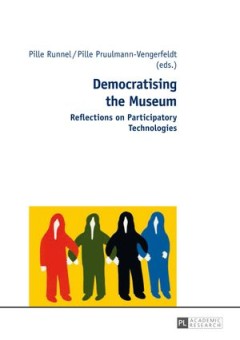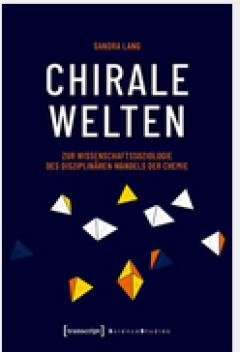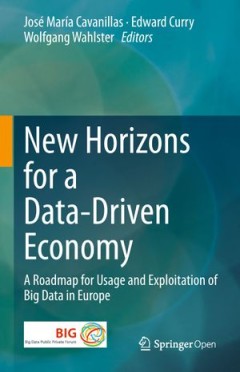Filter by

The Onlife Manifesto: Being Human in a Hyperconnected Era
Philosophy of Technology; R & D/Technology Policy; Media Sociology
- Edition
- -
- ISBN/ISSN
- 9783642363481
- Collation
- -
- Series Title
- -
- Call Number
- -

One Hundred Years of Chemical Warfare; Research, Deployment, Consequences
Introduction This book is open access under a CC BY-NC 2.5 license. On April 22, 1915, the German military released 150 tons of chlorine gas at Ypres, Belgium. Carried by a long-awaited wind, the chlorine cloud passed within a few minutes through the British and French trenches, leaving behind at least 1,000 dead and 4,000 injured. This chemical attack, which amounted to the first use of a weap…
- Edition
- -
- ISBN/ISSN
- 9783319516646
- Collation
- -
- Series Title
- -
- Call Number
- -

Democratising the Museum Reflections on Participatory Technologies
Democratising the museum is a collection of articles reflecting upon the problem of how participation, technologically mediated or not, can support the museum in the process of becoming more accessible. The open museum shares power with its visitors while negotiating professionalism and the role of the museum in a modern society. The book looks at the roles and struggles of audiences/visitors a…
- Edition
- -
- ISBN/ISSN
- 9783653039726
- Collation
- -
- Series Title
- -
- Call Number
- -

Chirale Welten; Zur Wissenschaftssoziologie des disziplinären Wandels der Ch…
Die Chemie büßt zugunsten physikalischer und lebenswissenschaftlicher Konzeptionen zunehmend an Deutungsmacht über die molekulare Welt ein.
- Edition
- -
- ISBN/ISSN
- 9783839457948
- Collation
- -
- Series Title
- -
- Call Number
- 620 LAN c

Oceanography and Marine Biology: An Annual Review, Volume 57
Oceanography and Marine Biology: An Annual Review remains one of the most cited sources in marine science and oceanography. The ever increasing interest in work in oceanography and marine biology and its relevance to global environmental issues, especially global climate change and its impacts, creates a demand for authoritative reviews summarizing the results of recent research. This volume co…
- Edition
- -
- ISBN/ISSN
- 9780429643569
- Collation
- -
- Series Title
- -
- Call Number
- -

North American Cornucopia: Top 100 Indigenous Food Plants
Many North American plants have characteristics that are especially promising as candidates for expanding our food supply and generating new economically competitive crops. This book is an informative analysis of the top 100 indigenous food plants of North America, focusing on those species that have achieved commercial success or have substantial market potential. The book's user-friendly form…
- Edition
- -
- ISBN/ISSN
- 9781466585942
- Collation
- -
- Series Title
- -
- Call Number
- -

No Bicycle, No Bus, No Job: The Making of Workers’ Mobility in the Netherla…
For working people, the cost of getting to work, in terms of time and expense, is a crucial aspect of daily life. In the twentieth century, people’s opportunity to travel increased. This did not, however, apply to everyone. The absence of affordable housing near job locations combined with the lack of safe, efficient, and affordable mobility options aggravated social exclusion for some. No Bi…
- Edition
- -
- ISBN/ISSN
- 9789048556403
- Collation
- -
- Series Title
- -
- Call Number
- -

News Framing Effects: Theory and Practice
News Framing Effects is a guide to framing effects theory, one of the most prominent theories in media and communication science. Rooted in both psychology and sociology, framing effects theory describes the ability of news media to influence people’s attitudes and behaviors by subtle changes to how they report on an issue. The book gives expert commentary on this complex theoretical notion a…
- Edition
- -
- ISBN/ISSN
- 9781351802550
- Collation
- -
- Series Title
- -
- Call Number
- -

New Orleans and the Global South: Caribbean, Creolization, Carnival
Innerhalb der USA gilt New Orleans seit jeher als die „unamerikanischste“ Stadt, als exotisch und anders, gar als „sozio-geographischer Unfall“. Hier überkreuzen sich nicht nur die Einflüsse verschiedener Kolonialkulturen, sondern auch die Routen des atlantischen Sklavenhandels und der asiatischen Arbeitsmigration und nicht zuletzt die ideellen wie materiellen Transferbewegungen zwisc…
- Edition
- -
- ISBN/ISSN
- 9783487155043
- Collation
- -
- Series Title
- -
- Call Number
- -

New Horizons For a Data-Driven Economy: a Roadmap For Usage and Exploitation …
Information Storage and Retrieval; Innovation/Technology Management; Computer Applications; Computers and Society; Big data
- Edition
- -
- ISBN/ISSN
- 9783319460307
- Collation
- -
- Series Title
- -
- Call Number
- -
 Computer Science, Information & General Works
Computer Science, Information & General Works  Philosophy & Psychology
Philosophy & Psychology  Religion
Religion  Social Sciences
Social Sciences  Language
Language  Pure Science
Pure Science  Applied Sciences
Applied Sciences  Art & Recreation
Art & Recreation  Literature
Literature  History & Geography
History & Geography